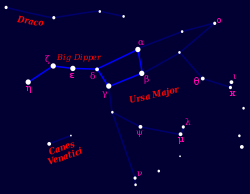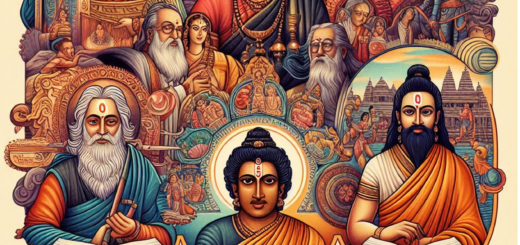Constellations and Galaxies
Summary of constellations and Galaxies
Solved exercise of constellation and galaxies

Summary
It is difficult to see any objects other than sun in the day sky. the moon, some planets and bright, shine, beautiful stars. Astronomers from Claudius Ptolemy to Galileo Galilee have made us curious to know that what lies beyond the earth. Let us now look at the discoveries beyond the earth.
The universe
The stars, planets, moons, other heavenly bodies, dust particles, the vast emptiness in between and everything else forms the universe. The universe is so vast that it is beyond our imagination. The scientists who study and experiment all about the universe and its happenings. are called astronomers. The branch of science that deals with the study of celestial objects is called astronomy.
Constellations
Constellation is a group of stars. The stars in a constellation seem to appear close to each other forming some patterns. Constellation have no real existence. Their designs are just imaginary lines. They appear to be moving from east to west. Greek alphabet are used with the name of constellations to identify stars.
Example : The brightest star in orion is called Beta Ori/ Yunis. It is also called Rigel.
Some of the constellations are
1)Ursa major

Ursa Major is a Latin word Ursa major meaning larger bear . This constellation is also called the Great Bear. It is visible through out the year but best seen in the month of April. Its Indian name is Saptharishi.
2) Ursa minor

The constellation Ursa minor is a Latin Ursa minor word meaning smaller bear. It is seen in the northern sky. This constellation is one of the 48 Constellations listed by Claudius Ptolemy and remains one of the 88 modern constellations. The pole star is one of the stars in this constellation. Its Indian name is Laghu Saptharishi.
3.Orion

Orion in the night sky and it is visible during winter. It consists of a group of seven bright stars and several faint stars. The stars Betelgueuse and Rigel are two of its brightest stars. Orion is also called the Hunter. Its Indian name is Mahavyadha.
Zodiacal constellation

The movement of the sun seems to follow a path. This path is called the zodiacal belt. The twelve constellations located in this path are called zodiacal constellations. Aries, Taurus, Gemini, Cancer, Leo, Virgo, Libra, Scorpius, Sagittarius, Capricorn, Aquarius and Pisces are the zodiac constellations.
Galaxies in the universe

Galaxies are a collection of stars, gases and dust bound together by gravity. The sun, the earth, the moon, other planets and all stars that are visible and invisible belong to our galaxy called the Milky Way.
Types of galaxies

Galaxies are of three types according to their apparent shape. They are elliptical, spiral and irregular galaxies.
- Elliptical galaxies: are the most common type of galaxies and these could have been formed as a result of the collision of smaller spiral galaxies.
- Spiral galaxies: They contain stars, gases and dust. The centre of the galaxies are concentrated with stars and is called bulge. Our galaxy is a spiral galaxy.
- Irregular galaxies : Picture as Irregular galaxy An irregular galaxy is a Irregular galaxy galaxy that does not have a distinct regular shape. Most irregular galaxies were once spiral or elliptical galaxies but were deformed by disorders in gravitational pull.
Elliptical orbit
The path of any The moon orbiting the earth heavenly body around another heavenly body is called an orbit. heavenly objects in space move along an orbits. Although some heavenly bodies follow circular orbital paths, most orbits are like a stretched circle or ovals. These shapes are called ellipses. All planets in the solar system and satellites move along elliptical orbits.
Concept of light year
A light year (ly) is a unit of Know this : 1 Light year = 1016 m. length equal to 10 trillion (1013) km. As defined by the International Astronomical Union (IAU), a light year is the distance that light travels in vacuum in one Julian year (1 year)
1 Light year = 1016 m.
Exercise
I. Name the following :
1. The branch of science that deals with the study of celestial objects. deals with the study of celestial objects is called astronomy.
2. A group of stars with a name assigned to it.: Constellation
3. The distance travelled by light, in vacuum, in a year. : one Julian year (1 year)
II. Answer the following questions :
- What is the universe?
Ans:The stars, planets, moons, other heavenly bodies, dust particles, the vast emptiness in between and everything else forms the universe.
2.What are galaxies?
Ans:Galaxies are a collection of stars, gases and dust bound together by gravity.
3. Name the galaxy in which we are living. What type of a galaxy is it?
Ans:It’s a small part of the Milky Way Galaxy .We live on a planet called Earth that is part of our solar system
4. Define the following
a) elliptical galaxy:are the most common type of galaxies and these could have been formed as a result of the collision of smaller spiral galaxies.
b) spiral galaxy:They contain stars, gases and dust. The centre of the galaxies are concentrated with stars and is called bulge. Our galaxy is a spiral galaxy.
c) irregular galaxy:An irregular galaxy is a Irregular galaxy galaxy that does not have a distinct regular shape. Most irregular galaxies were once spiral or elliptical galaxies but were deformed by disorders in gravitational pull.
5.What is an orbit? What is its shape?
Ans:The moon orbiting the earth heavenly body around another heavenly body is called an orbit. Although some heavenly bodies follow circular orbital paths, most orbits are like a stretched circle or ovals. These shapes are called ellipses.
6.Explain the following
a) Ursa Major:Ursa Major is a Latin word Ursa major meaning larger bear . This constellation is also called the Great Bear. It is visible through out the year but best seen in the month of April.
b)Ursa Minor: The constellation Ursa minor is a Latin Ursa minor word meaning smaller bear. It is seen in the northern sky. This constellation is one of the 48 Constellations listed by Claudius Ptolemy and remains one of the 88 modern constellations.
c)Orion: Orion in the night sky and it is visible during winter. It consists of a group of seven bright stars and several faint stars.




























